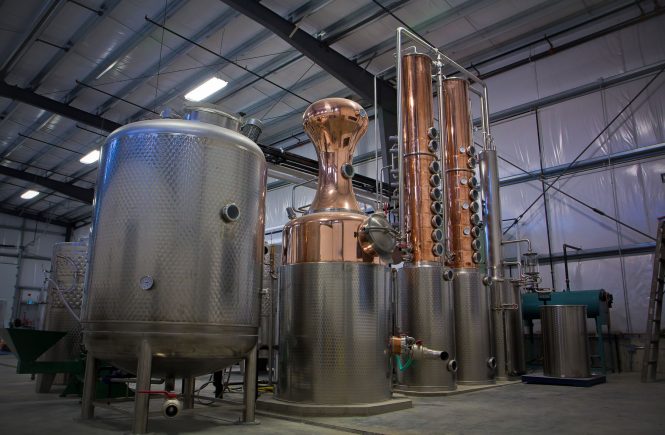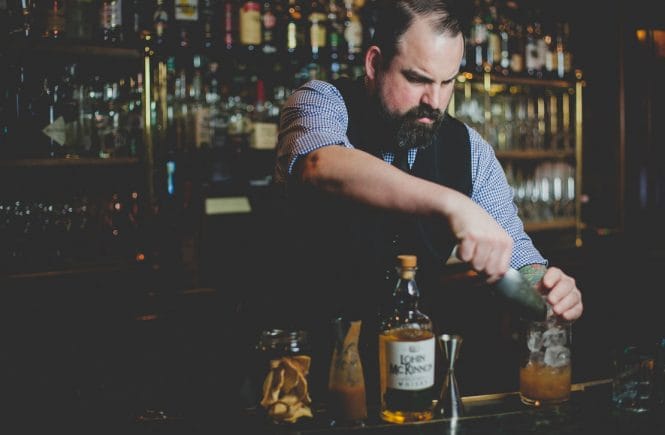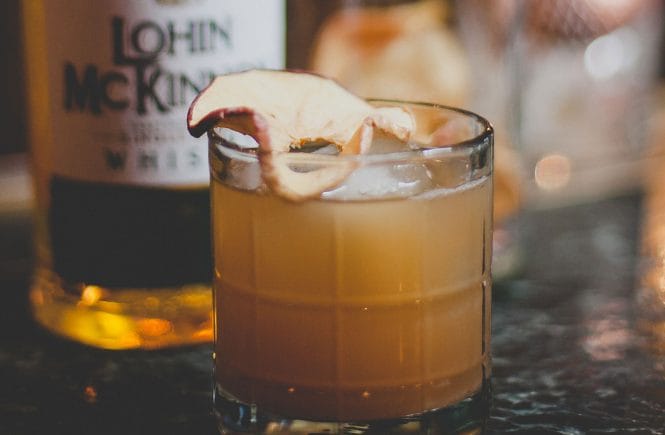George S. Grant is part of the sixth generation of the family that bought the Glenfarclas distillery in Scotland’s Speyside region in 1836. Now the director of sales for the brand, he talked to The Alchemist about innovation, tradition and the distillery’s most famous drams.
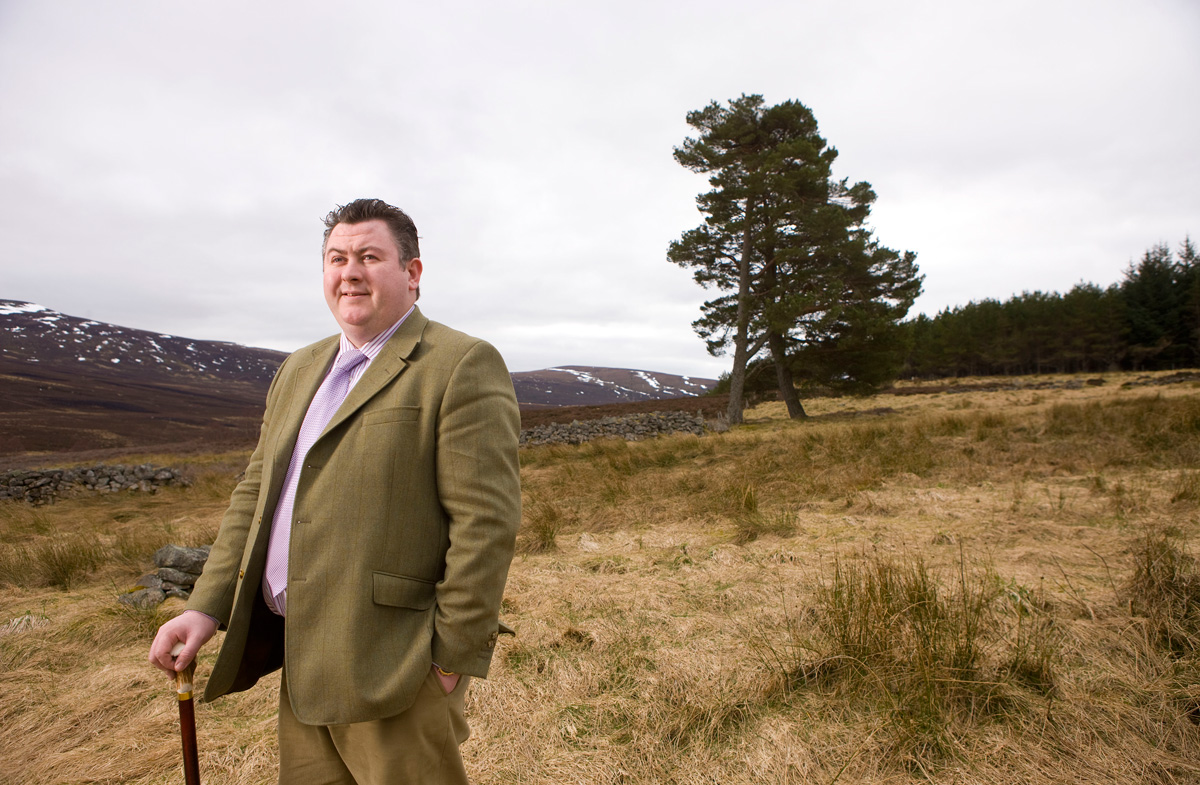
There’s a lot of innovation in whisky and in Scotch today. Is the Family Cask series at Glenfarclas where your fans see that within your brand?
“We’ve seen the revamping of Scotch, or the experimentation side of things, I suppose. I’m not saying we do don’t it or haven’t done it, but it’s things we’ve done 60 or 70 years ago. Primarily, all of the Glenfarclas range is now 100 per cent aged in Oloroso sherry casks. Back in the 1960s we did an experiment where we filled 15 different types of sherry casks—fino, Manzanillo, Amontillado, Pedro Jimenez… About 20 years ago was the first time you started seeing finishing ranges on Scotch, and ever since then people have been jumping on the bandwagon.
The Family Casks are single casks so they’re a single snapshot. The whole idea behind doing that was to let people see what we actually had available, let people see the amazing range we had. We’re an older distillery so we can play to our strengths, including the incredible aged stock that we have.
Who is buying single malt Scotch now, and who’s going to be buying it now when your kids are in the business?
“When I first started this job 20 years ago and I swear to God you couldn’t give Scotch away. Now, in the States these kids come up to me and can tell me all about single malt, and they’re 24, 25 years old. All of a sudden you realize it’s come full circle. They don’t want to drink the same thing that their parents drank, and their parents drank vodka. So they’re turning to brown spirits. Women do enjoy drinking whisky and a woman’s palate is like 50 times better than a man’s, normally: they go many more aromas and smells. We sell to markets in more than 100 countries around the world and every one of them is different.
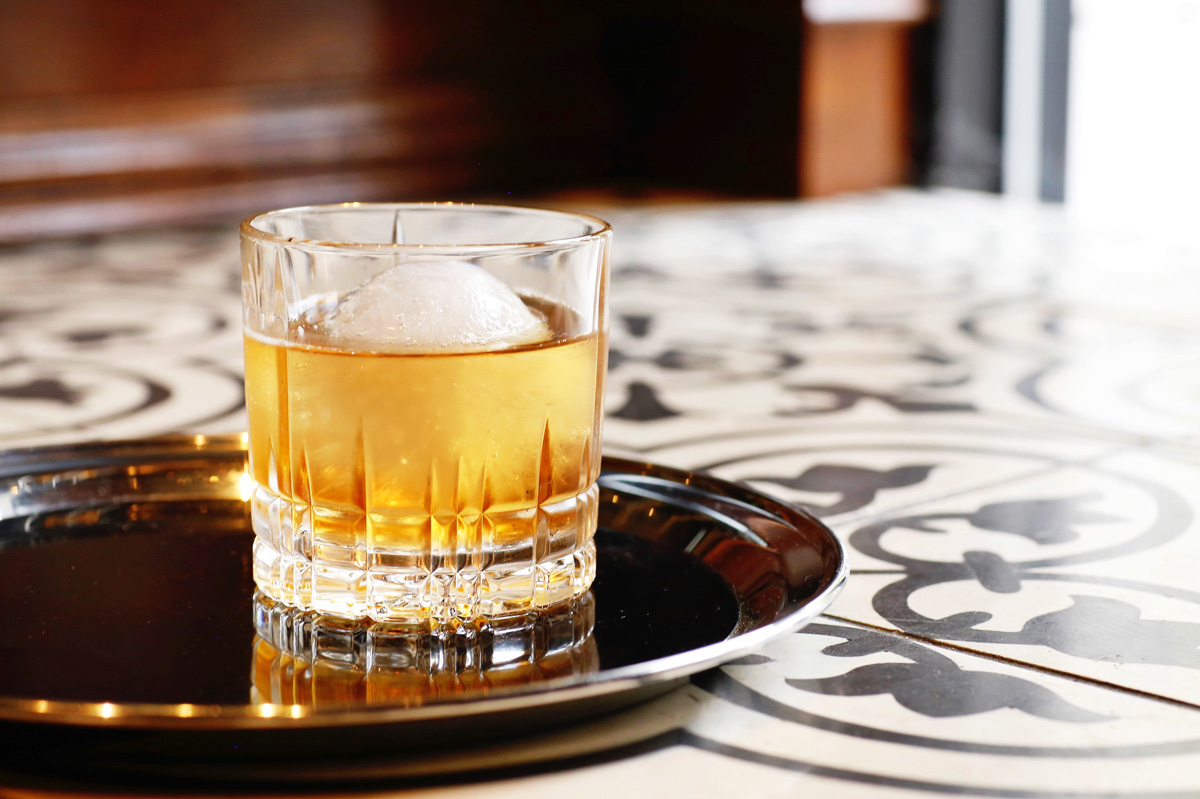 Glenfarclas 105 is cask strength. What’s the appeal of that for whisky nerds?
Glenfarclas 105 is cask strength. What’s the appeal of that for whisky nerds?
Glenfarclas 105 has been around 50 years, the first time we did it was 1968 so it’s the 50th anniversary this year. We are bringing out a special anniversary bottling laster on this year, a 22-year-old 105, to celebrate that fact. Now it’s almost 50 per cent of our sales. I’ll tell you why: look at this name. Around the world, people can’t pronounce it and say it. 105 you can translate in any language at all. There’s a bar in China that has 105 on tap!
It goes back to my grandfather. He was absolutely baffled about why we sold so much of our whisky around the world. He’d say ‘And we add the water to it in Scotland? Then ship it 6,000 miles? They can add their own bloody water.’ Cask strength is just amazing because you can really play with it: you can add water, stick an ice cube in it, do whatever you like to do to it. It literally comes right from the cask into the bottle. That’s why we put it in brown bottles. Every time we bottle it, it’s a slightly different colour.”
What do you think about the trend toward so called “NAS” non-age statement Scotch: brands that don’t have number on the label indicating the youngest whisky in the bottle?
“The 105, for instance, used to have an age statement on it. It used to say 8 years old, then it said 10 years old, and now we’ve removed the age statement entirely. There are a number of reasons for it, but one of them I’m going to chalk up to global warming. We’re now seeing maturation happening right through the year. We used to have a 3-4 month period where not much maturation was happening. We put whisky in the cask at blender’s filling strength or 63.5 per cent alcohol by volume. It used to take 10 years for our whisky to drop to 60 per cent alcohol in the barrel, and now after 10 years it drops to about 58 per cent, so we’re having to add younger whisky to get the strength and alcohol back up. We do products in some markets that are non-age-statement specific. But we’re not in a rush to sell things out. I firmly believe if somebody’s going to pay that kind of money for a bottle of whisky, they want to know exactly what’s in the bottle.
You’re a sixth-generation family member at Glenfarclas. How important is that kind of authenticity?
“Authenticity is one thing we do actually have, we don’t need to make it up. We’ve actually got a face to the brand, which is kind of unusual as well. It makes people feel more connected as well, we like to say it makes them a member of the family as well. At the end of day I want people to buy Glenfarclas, but I want them to know why they like Glenfarclas, how we make Glenfarclas.
I worked in four distilleries before I worked at Glenfarclas. I’ve been a malter, I’ve been a distiller, I worked in Bordeaux and learned about wine. As a family member you’re not allowed to come work at Glenfarclas until you’ve worked at another distillery first. I know the production side inside and out.”
I’m sipping the Glenfarclas 21: can you walk me through this dram? It’s pretty special.
“The 21-year-old to me has this great balance to it. I like to imagine putting this whisky balloon, and it wouldn’t burst it: it’s got no sharp edges. It’s got nuts, vanilla, toffee, caramel, dark and light fruits, everything there in perfect proportion. It’s got a wonderful bouquet in the nose, lovely light sweetness coming through on the front of the palate, and the sherry cask really coming through as well. The great thing for me on the 21 is the finish. It’s just such a long, elegant, delicate finish to it. The only problem with the 21-year-old, I find, is that it’s awfully easy to drink.”
—by Charlene Rooke


